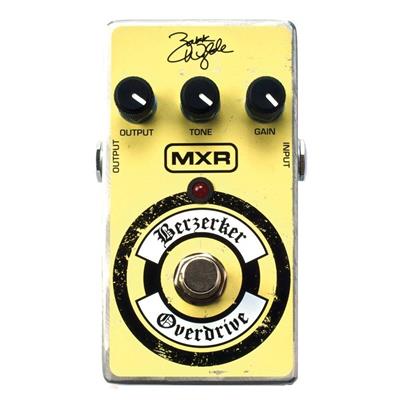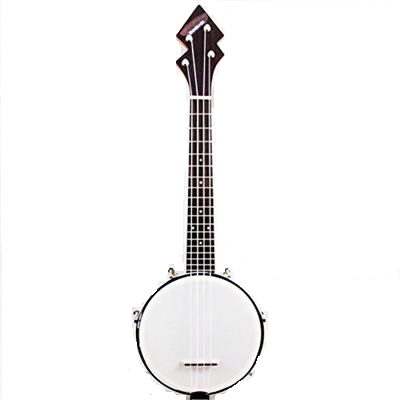Would you believe me if I told you that my life changed when I came across my first distortion pedal? This might sound a bit cheesy, but I am sure most of you out there have experienced this feeling. Back then I had just started playing a guitar and was in the phase of playing everything. I had not figured out what music I wanted to play and how I wanted to sound.
My only aim was to take all the notes right. My world turned upside down when one day my friend suggested to try playing with his distortion pedal. He could not get the sound right and wanted to find the reason. Let me tell you, once I plugged in, I felt the wave of excitement and shock, I could not believe that my music could sound that good.
I would say that was when I found the real music and came across my soulmate pedal. If you want to find yours, keep on reading until you discover the best distortion pedal for your music.
What’s The Best Distortion Pedal
| Image | Amplifier Model | ||
|---|---|---|---|
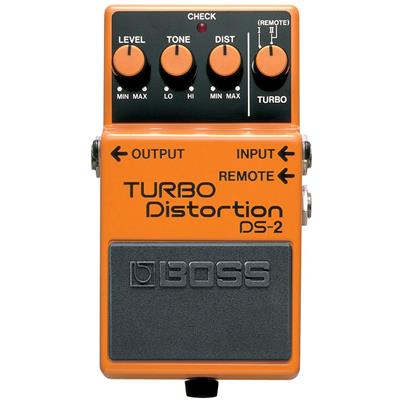 | Boss DS-2 Turbo Distortion Pedal |  (5 / 5) (5 / 5) | Check on Amazon |
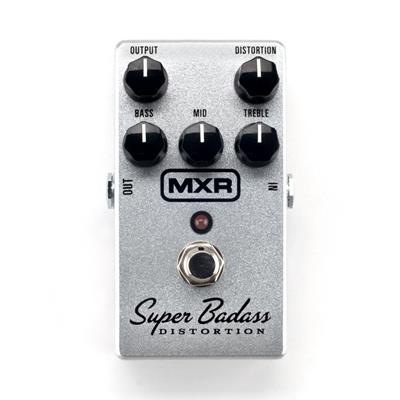 | MXR M75 Super Badass Distortion |  (4.9 / 5) (4.9 / 5) | Check on Amazon |
 | Xotic Effects SL Drive Distortion |  (4.8 / 5) (4.8 / 5) | Check on Amazon |
 | Electro-Harmonix Metal Muff Distortion Pedal |  (4.9 / 5) (4.9 / 5) | Check on Amazon |
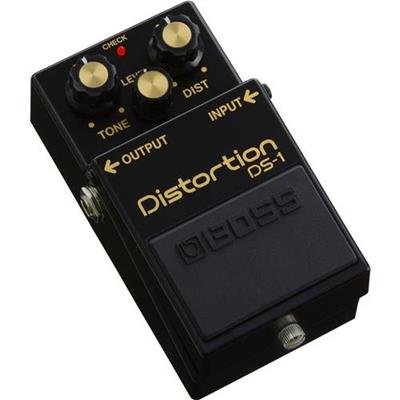 | BOSS DS-1 Distortion Guitar Pedal, 40th Anniversary Limited Edition |  (4.9 / 5) (4.9 / 5) | Check on Amazon |
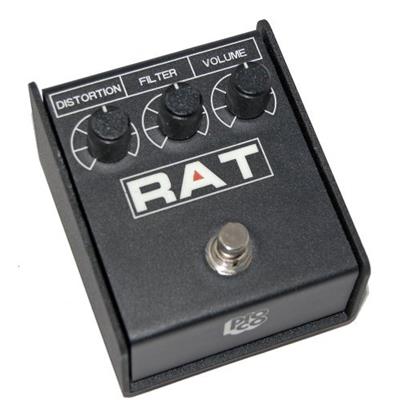 | Pro Co RAT2 Distortion Pedal |  (4.8 / 5) (4.8 / 5) | Check on Amazon |
 | Electro-Harmonix Nano Big Muff Guitar Distortion Pedal |  (4.8 / 5) (4.8 / 5) | Check on Amazon |
 | Xvive Golden Brownie T1 Distortion Pedal |  (4.8 / 5) (4.8 / 5) | Check on Amazon |
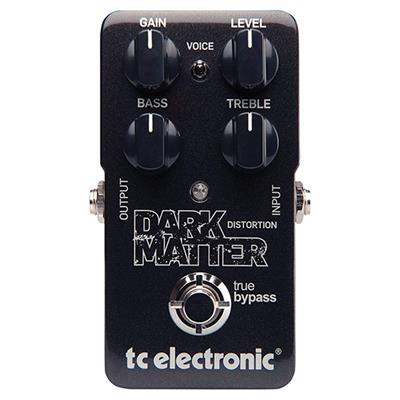 | TC Electronic Dark Matter Distortion Pedal |  (4.8 / 5) (4.8 / 5) | Check on Amazon |
 | Biyang Metal End (King) High Gain Distortion Pedal |  (4.8 / 5) (4.8 / 5) | Check on Amazon |
Boss DS-2 Turbo Distortion Pedal

The Boss DS-2 is a distortion pedal featuring two distinct Turbo modes. In Turbo mode I, it delivers a smooth and warm distortion tone with a flat frequency response. On the other hand, Turbo mode II is specifically designed for lead guitarists as it provides a sharp and aggressive distortion with boosted mid-range, enhanced treble, and increased gain. Additionally, it has a built-in remote jack that can be connected to an external footswitch, allowing the player to switch between modes remotely. Boss DS-2 is probably one of the most controversial pedals of all time. You will either love it or loathe it, there is no in-between. It all depends on the music you play. If you are into the music of Nirvana, you will find this pedal very appealing. It definitely does not have a metal distortion, but works really well with classic or alternative rock, producing a subtle distortion. One way or another, Boss DS-2 is a versatile pedal, offering a great sound when chosen for the right music.
Pros:
- Low price
- Durable
- Reliable
Cons:
- Does not come with AC adapter
- A bit too much feedback
MXR M75 Super Badass Distortion

MXR M75 Super Badass Distortion stands as an exceptional and one of the best distortion pedals, in the analog category, offering a vast spectrum of tones and inviting you to embark on a thrilling musical journey of experimentation. It offers a full spectrum of signals with its distortion control, ranging from 70s low gain overdrive to up-to-date “scooped” metal distortion. Its EQ is a dream come true, since it comes with output, distortion, bass, and mid and treble knobs, allowing you to shape your sound the way you want. Generally, when you use the pedal at its maximum capacity, it is natural for the sound to develop unwanted noise. You will not have this problem with MXR M75, because EQ does really work wonders. It controls the feedback and reduces sizzle or hiss. It works quite well with the middle and subtle tones as well. Plus, the sustain it offers will turn you into a real rock star. In short, Badass gives you a clear sound that can be distorted to your taste.
Pros:
- Easy to use
- Powerful
- Good response and easy detection of the sound
Cons:
- Can overlap other pedals in the chain
- The tone is not too saturated
Xotic Effects SL Drive Distortion

Xotic Effects SL Drive Distortion is a pedal that is very simple and easy to use. It has two settings, which give room for versatility: Super Lead provides a brighter tone with more gain, whilst Super Bass offers low-end tones with less gain. It has a very good response and works very well with amps (first, you have to find the right one, though). Xotic Effects SL Drive has a true bypass switching and guarantees zero signal interference in turned-off conditions. This pedal has volume, tone, and drive knobs, which allow you to be the boss and adjust the sound to your preferences. You can go from bright to dark with your sounds and it will work really well for those who play classic or hard rock. I would even say that it is the best pedal for capturing Marshall tones. However, the sound is not clean enough for blues and it is not as deep or distorted as metal requires. The signal may lose its depth if you use it in front of the clean amp. But it boosts “dirty” signals pretty well. With the right expectations, SL Drive will be an asset to your pedalboard.
Pros:
- Great lead tone
- Compact design
- Responsive
Cons:
- Does not have a dramatic effect
- DIP switches are not easily accessible
Electro-Harmonix Metal Muff Distortion Pedal

Electro-Harmonix Metal Muff is undoubtedly one of the best distortion pedals. It has Volume, Boost, Treble, Mid, Bass, and distortion knobs which give you full control over the device. Even at the highest levels of distortion, it does not make your ears bleed. This pedal delivers a precise tone, mids can be adjusted easily. You can scoop the sound without damaging it. Additionally, Electro Harmonix Metal Muff has a switchable Top Boost and bypass which puts an emphasis on narrow-band treble frequencies and guarantees that your sound will be heard. This pedal has a very active EQ and will mess up your amp settings, so you will have to take some time adjusting it. You might need a noise gate with it to control the tone perfectly. In conclusion, when it comes to metal music, Metal Muff reigns supreme as the ultimate distortion pedal. However, it’s important to approach it with patience to discover your ideal tone. Once you’ve unlocked its full potential, this pedal will effortlessly deliver outstanding results.
Pros:
- Versatile
- Powerful
- Good built quality
Cons:
- Way too much treble
- A bit time consuming
BOSS DS-1 Distortion Guitar Pedal, 40th Anniversary Limited Edition

BOSS DS-1 offers an array of tones: you can produce both mild and heavy sounds. It contains a two-stage circuit, including transistor and op-amp stages, which broadens your spectrum even further. It has Level, Tone, and Distortion knobs that allow you to control the amount of signal processing. The Tone dial lets you adjust EQ to your liking. BOSS pedals are known for their rock-hard quality and durability and DS-1 is no exception. It creates rich and dynamic sounds that can be intensified or toned down when needed. If you have ever owned a DS-1, you will notice that the limited edition is remodified and improved version of the well-known classic. The difference between sound, design, and the quality of distortion itself is quite profound and noticeable in these two models. Plus, you will get the chance to brag about your unique collection with a limited edition pedal in it. That being said, even though owning a BOSS pedal is a statement, DS-1 will not blow your mind. I would say it does its job quite well but needs some modes for you to see its true capabilities.
Pros:
- Very durable
- Responsive
- Modern and fancy design
Cons:
- A bit too noisy
- Not that powerful tone
Pro Co RAT2 Distortion Pedal

Pro Co RAT2 will become one of the basics on your pedalboard. It can be used as a dirt channel or a boost for your amps. It has filter control that allows you to reduce brittle high-end frequencies or turn it up to let your otherwise inaudible sounds come through. The sound of RAT2 ranges from mild overdrive to fuzz and the volume knob makes it easy to apply just the right amount of distortion to your signal. This pedal can produce arena rock rhythm tones and soaring leads. The best thing about RAT2 is that it can create distortion without depriving your sound of clarity. Additionally, it works really well with chords and complex riffs. So you can distort your sound as much as you want without it getting muddy or too heavy. This pedal offers just the right amount of versatility and does not let even the lowest note get lost.
Pros:
- Clear sound
- Compact
- Durable
Cons:
- Not a standard design (does not fit in a typical AC adapter)
- Battery does not fit well in the compartment
Electro-Harmonix Nano Big Muff Guitar Distortion Pedal

If you love your Big Muff but do not really care for its size, I have good news for you. Electro-Harmonix Nano is a shrunken version of your favorite pedal with the same sound and capabilities. It has three controls: the Volume knob allows you to bring the distortion back to the game, the Tone knob concentrates on the sonic spectrum, whilst Sustain produces silky and powerful tones. Its rich, creamy, violin-like sustain will guarantee this pedal a place on your pedal board. Nano Big Muff offers true bypass and increased signal integrity while producing crushing distortion. Plus, it can be used alone without getting too noisy and cranky. With a good amp, this pedal will make sure that your neighbors know who is playing. Nano Big Muff is definitely a good choice within its low price range due to its unique sound.
Pros:
- Nice sustain
- Powerful sound
- Reliable
Cons:
- Can develop a feedback
- Limited selection of effects
Xvive Golden Brownie T1 Distortion Pedal

Xvive Brownie T1 is based on the Marshall JCM 800. It is a raging distortion that will not force you to rob a bank for it. Golden Brownie T1 is equipped with a Drive knob, which will help you produce a huge range of gain as well as sustain. It will give you the hunch of 80s hard rock with all of its sounds and mild crunches. Just like the Marshall amp, this pedal has a Presence control, giving some space and air to the virtual tubes. Golden Brownie T1 can be used either as an effects pedal or a preamp and booster. Naturally, it has a lively distortion that will make even the simplest amp sound like a Marshall. If you appreciate good design, then this pedal is sure to impress you. Its appearance exudes an air of luxury (fortunately, it doesn’t come with a high price tag), showcasing a robust and aesthetically pleasing build. The Golden Brownie T1 is undoubtedly one of those pedals that becomes irreplaceable once you develop a fondness for it.
Pros:
- Distinctive
- Powerful sound
Cons:
- A bit noisy
- Does not come with a battery
TC Electronic Dark Matter Distortion Pedal

This one is for Plexi lovers. Dark Matter Distortion offers an array of sounds – almost anything you could wish for. From clean blues and warm tones to the fully saturated leads replete with harmonics and overtones, this pedal will win its place on your pedalboard. Dark Matter Distortion was designed for “dirty” musicians, who like their sounds very distorted. It is equipped with an all-analog circuit, dual-band tone controls, level and drive knobs, and a voice switch to enhance the bass. This pedal allows you to travel from time to time and achieve all the sonic spectrums from heavy to grungy sounds. If you were not charmed by all these versatile features (though that would be very surprising), there is one more thing that will mesmerize you: Dark Matter Distortion is one of the most reliable pedals. No matter how loud is the volume, the sound stays clear and does not get muddy. What else do you need?
Pros:
- Good selection of effect
- Intensifies all the colors of your chords
- Compact design
Cons:
- Mids can be a bit too high by default
- Does not come with DC adapter
Biyang Metal End (King) High Gain Distortion Pedal

Biyang Metal End is the definition of versatility. It combines all your favorite effects. With three amp modes (Modern, Normal, and Classic) your sound can become tailored to your taste. It has a toggle switch, which allows you to cut the highs, plus Normal, Bright, and Warm modes allow you to control the tone. You can play like a real pro with four EQ knobs- Low, Middle, High, and Mid Frequency. If you add all that up, you will get a surprising number: Metal End offers 18 distortion modes and that is not all. It has several control knobs to make you feel like a boss. What is more, this pedal has a built-in amp simulator. If you set this bad boy to low gain, you will create the best tone-shaping overdrive you have ever listened to. Crank it up and set it to mid gain and you will jump right into Megadeth sound. Metal End produces an accurate, precise sound without changing the tone itself. Once you master how to adjust all the knobs, you will give birth to a killer pedal with saturated sound and an array of sonic spectrums (from classic rock to metal). For all those picky buyers out there, even you will have a hard time roasting this one.
Pros:
- Very versatile
- Full-control over the sound
Cons:
- Not for everyone
- Might get noisy
A brief history of distortion
In the early 1940s and 1950s, musicians tried to maximize the capacity of their guitars by driving their amplifiers to the fullest. The sound they received had a growling effect to it, which was considered an error by the engineers. As years passed by, this error became a trend and more and more guitarists started using it in order to create a thicker, more saturated sound. However, one of the first samples of recorded guitar distortion was a result of an accident. In 1951, Ike Turner and the Kings of Rhythm recorded “Rocket 88”, with their guitarist Willie Kizart playing through a damaged tube amp. The replication of this sound became the main target for musicians of that time.
Experimenting with distorted sounds was everybody’s favorite activity in the early 1950s. Willie Johnson from Howlin’ Wolf started to increase gain beyond the norm on purpose in order to create warm distorted sounds. Similar tones can be heard in “The Things That I used to do” (1953) by Guitar Slim, “Maybellene” (1955) by Chuck Berry. A heavier distortion was created by Pat Hare in “I’m Gonna Murder my Baby” in 1954. He turned the volume on his amplifier all the way up and delivered a dirtier electric guitar sound.
The fuzz sound that we nowadays refer to when we mention distortion was discovered by Grady Martin in 1961, when he was playing Marty Robbins’s “Don’t Worry” with a faulty preamplifier. The sound of his guitar got distorted and produced a fuzzy sound. Recreating this sound was a challenge that led to the development of the first fuzz pedal. It was introduced by Orville Rhodes, who built a fuzz box for The Ventures. In 1962 the Maestro FZ-1 Fuzz-Tone pedal came out and found its place in The Rolling Stones’ “(I Can’t Get No) Satisfaction”. The following years were characterized by race between manufacturers to develop more and more amps and pedals. Sound effects became an integral part of the legendary music created by Jimi Hendrix, Deep Purple, Pink Floyd and many more.
In the late 1960s, Big Muff was created, the pedal that still holds its place in modern music. The combination of these pedals and overdriven amps were used to push distortion to a new level and create heavy metal (Motörhead claimed to be one of the brigadiers).
This is a great example how sometimes accidents define and shape our life. It if were not for faulty and damaged amplifiers, who knows when and how distortion would erupt. A simple error that turned into a great discovery ceases to mesmerize musicians and audiences up to this day.
What is the big deal about distortion anyway?
In the world of differences, choices and a variety of sounds, you might start contemplating why you need all these effects and devices that just complicate everything. The answer is quite simple: you want to develop as a musician and in order to achieve that you have to explore every single possibility your tone has to offer. You have to grab your instrument, go out there and experiment in order to find your own style and make your music unique. Distortion is something that is not for everyone but can be used with almost anything. It is an audio effect that can range from subtle to heavy, from classic, toned-down sounds to crazy raging tones. It all depends on your taste and preferences and that is the part which you have to determine yourself. Nobody can tell you what you like. All we can do is give you some options and freedom to select your soulmate of pedals.
The effect itself is created by clipping the sound signals in a way that intensifies the tone and adds a piercing touch to your notes. Generally, even the simplest distortion pedal comes with a level, tone and gain knobs which can be adjusted according to your music. By increasing the gain you can produce those “growling”, “fuzzy” sounds and dive into metal paradise. However, distortion pedals can be used with classic rock music as well. For me, distortion is something that every musician should play with at least once. It alters your sound in a unique way and forces those creative senses to awaken. Speaking of that, let’s dig deep and differentiate between different kinds of distortion out there.
Overdrive
This is a type of distortion that strives for recreating the sound of an overdriven tube amp. Typically, overdrive is a more subtle, lighter type of distortion, but it does not mean it cannot be used at its maximum capacity to create a heavier tone. It is worth noting that overdrive pedals can be used with solid-state amps as well as tube amps.
Fuzz boxes
Fuzz is considered a bit outdated for today’s standards. The sound it produces is a bit muddy and the individual tones are not as distinctive as with other distortions. But some consider it as a throwback to good old days and prefer it to other sound effects. One way or another, it’s the versatility that lets the distortion really stand out.
Distortion
Distortion pedals produce a much heavier sound than overdrive and way more distinct tones compared to fuzz boxes. It can really change the game and take you to a whole new level. If you choose the one that suits your music, the range of your sonic possibilities will enhance unimaginably.
The important thing to note is that you should always pay attention to the features that different pedals have to offer. Some of them are quite simple but have great tones, while others are equipped with various modes and effects. You should make your choice depending on what you want to achieve with the pedal. Never forget to be picky with tone and gain because those are the features that interfere with your sound the most. Other factors such as design and durability play a huge role as well when picking out the pedal, but nobody wants a fancy device that sounds like crap. However, most of the time we ask too much. I have experienced having a pedal that did what it was supposed to, nevertheless, I have caught myself being too critical. Do not go and buy two-knob pedal if you want an array of modes, because by doing that the only thing you will achieve is a disappointment. Figure out what is your deepest desire and let it lead you on your way to great music.
Conclusion
In conclusion, mastering your sound is the most valuable experience in the world of music. There is no better feeling than discovering your sound and creating masterpieces with it. If you are a guitar genie and can do all of that without the help of effects, you deserve a medal my friend. More mundane players like me need a touch of spice to take our music to the next step, distortion pedal is the tailored potion for that. This article includes all the information you need to find the best distortion pedal and hopefully you will. Let your taste define your path and never give in to anybody’s “right” opinion.


